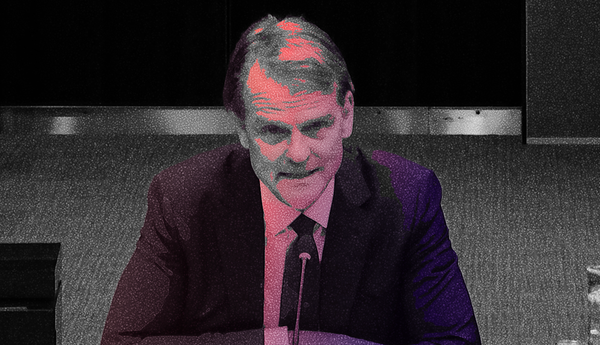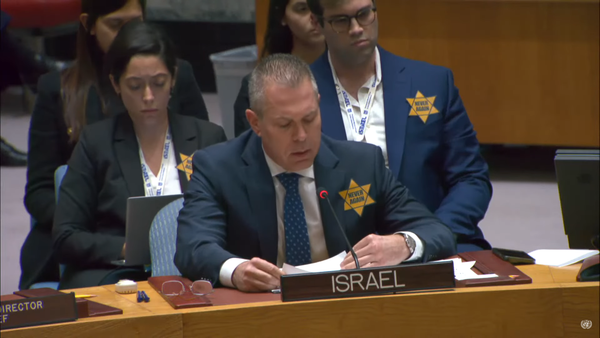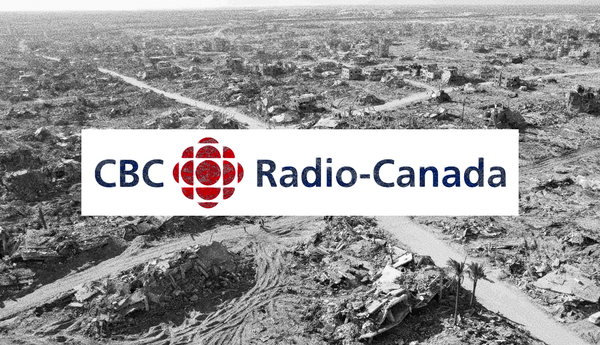To work as a Black journalist in Canada today is to report on the murder of children who might as well have been you as if they were strangers. It’s to dispassionately report on the kind of disasters that forced your parents across an ocean in search of new life, and weaponize conventional wisdom to buttress stories of neighbourhood and sectarian violence with stereotype, myth and stigma.
It was said to me early in my career that the frameworks we use to understand and practice journalism in Canada create the conditions to turn Black journalists into collaborators in the editorial dehumanization of their peers. That assessment was once the source of great disagreement. Today, it’s one I’m compelled to agree with.
I write this to the backdrop of the largest protest movement in modern American history, and the deadliest viral outbreak in more than a century. The pestilence of COVID-19 is unprecedented in all of our lives, but the menace of state violence visited upon Black people is an emergency many know well. It’s the pandemic we’ve always known.
For Black folks, the digital age has been an era of recurring social death, for which the image of George Floyd’s murder now offers an eternal aide-memoire. The same can be said of the viral campaign erected on the behalf of Breonna Taylor. And it’s worth noting that names like Floyd, Taylor and Jacob Blake, though now eternal, represent just a fraction of the innumerable names and stories we’ll never hear.
In this sense, this summer of protest was an echo from the past. And it’s moments like these that see Black journalists tasked with leadership roles in the newsroom. No matter your title, tenure or stature, you’re expected to bridge the information gap between your respective organization, and a movement that most who inhabit it couldn’t begin to understand.
This moment is made tougher via the media convention of “objectivity,” which is a philosophy predicated on the notion that journalists should be neutral observers to each story they cover. That we as journalists are mere vessels meant to carry an edition of a story to viewers that hasn’t been soured by the weight, or appearance, of personal opinion.
This mention of the “appearance” of opinion is essential. As most Black journalists will tell you, issues of bias or objectivity aren’t typically precipitated by actual indiscretions. Instead, they’re most often about our workplaces protecting themselves against a rising tide of white suspicion that understands itself as inherently neutral and everything else as riddled with a communicable bias.
Maintaining this convention often demands a tactic that has been described as “view from nowhere,” “both sides” or “hands off” journalism. This tactic is employed to create an artifice of neutrality and protect the irascible sensibilities of disagreeable viewers, as well as advertisers sensitive to the whims of their largely white, middle class, market base.
These editorial sleights of hand tend to feature most during moments of social upheaval, particularly those that implicate the police, military or other instruments of the state.
Objectivity fanaticism articulates itself a number of ways including journalists: reporting on the violence of a global superpower and the resistance of their colonial subjects as somehow equal, or the killing of an unarmed Black child by a neighbourhood patrolman as justified. Like clockwork, we’ve become accustomed to major news organizations effectively prostrating themselves in an attempt to confer seriousness on the absurd. This is the folly of the journalist’s artificial middle ground.
In the name of objectivity, the newsroom becomes a place of suppression for BIPOC journalists, whose mere presence threatens to puncture the veneer of neutrality.
Earlier this summer, CBS national correspondent Michelle Miller talked about the time a major newspaper publisher told her, “You’ve got to put your Blackness aside — you can’t be a journalist and a Black journalist.” The comment underscores an ideology still present in major newsrooms today, where acknowledging the entirety of one’s racial identity is believed to be antithetical to the trade itself.
The fact for Black journalists is that in the reception of each of our stories, no matter how innocuous or scrupulously researched, there will always exist an underlying assumption or suspicion that we carry a kind of subconscious bias — via some unspoken and inanimate dual loyalty — that could compromise the integrity of an organization. This suspicion emerges at every level of our job. Whether from the colleagues we pitch, those who will eventually edit our work or the consumer for whom the story was ostensibly designed with in mind.
This is where a philosophy purportedly based on fairness becomes a way to instrumentalize the segregation of newsrooms and the marginalization of non-white, and largely Black and Indigenous, journalists.
In an extended Twitter thread in June, Tom Rosentiel, veteran American journalist and author of the seminal book Elements of Journalism, laid bare the changed nature of journalism’s relationship with objectivity. He went on to explain that the arrival of objectivity to newsrooms in the 1920s was a way of employing “objective, observable, repeatable methods of verification in their reporting.” He continued, “That meaning is so misunderstood by journalists it has almost been turned on its head.”
You can almost see Rosenstiel, an avatar of journalism’s gilded age, reaching toward the words of laureled anti-colonial theorist Frantz Fanon, who said that an insistence on objectivity is always “directed toward someone.” In Fanon’s day that would’ve meant the colonized — in ours, the burden falls on the descendents of those same colonized people.
That is to say, there was a not-so-distant past where journalism articulated itself through homogeneously white, overwhelmingly male, middle class newsrooms that were informed by a broadly similar range of experiences. The arbiters of today’s pedantic struggle over objectivity have correctly identified this legacy to be their personal inheritance.
These are the journalists for whom a detached, observational writing and reporting tone is second nature. Many have no stake in the beat they find themselves covering — these issues are an abstraction, only understood from the other end of a microphone or television camera. It’s part of what informs the profound cowardice of an industry that has made a habit of couching clear charges of racism in attribution, lazy “he said, she said” binaries, or euphemisms such as “racially charged.”
White reporters, to this point, have been able to get away with a great deception that posits their sensibilities as a kind of normative standard to which everyone else is expected to submit themselves. As a young Black person that entered journalism without prior connections or an institutional sense of the industry, it was this basic premise that I was never able to understand.
On the topic of war, for example, it seemed clear that the descendents of those victimized by nation building and empire wouldn’t report on global militarism in the same way a child born to a quotidian, upper class, white family might. I understand this to be a position of strength and advantage.
The children of those who fled Syria, Somalia, Palestine and elsewhere understand our countries in a way we could never hope to. They see a version of us we can’t. But yet, mainstream foreign reporting in this country is occupied by a mobius strip of white journalists, many of whom have turned the detritus of “third-world” conflict into a wellspring of personal veneration and career advancement. The meme of the brave white journalist traversing the ignoble darker nations for the truth is an enduring one.
A similar tension is also evidenced in the way mainstream journalists report on inner city crime. The local crime beat is the lifeblood of the journalism industry, and it’s one that too often looks to play community and police off of one another. Worse, journalists can work as extensions of the police, functioning as mouthpieces for law enforcement by re-publishing press releases, publishing the unrelated mugshots of victims of violent crime, reporting on the police in the exonerative tense or inadvertently casting entire neighbourhoods as intrinsically criminal.
Journalism’s institutional closeness to the police is undergirded by the sense that the police themselves are somehow objective observers of their own malfeasance. The voice of the community falls away, and is often not included in the main thrust of the story. It’s a brand of journalism that has been called “police stenography,” and it can be found in the use of phrases like “police involved shooting” that work to obscure or flatten state accountability.
A recent piece in the Columbia Journalism Review from longtime police reporter Jason Cherkis recalls some of these issues from the perspective of a frontline journalist. Cherkis writes, “I may have documented police abuses, but the victims of police brutality rarely got to tell their stories beyond their encounters with the police. On the page, they were often little more than the sum of their injuries and their settlement checks […] when I read some of my crime stories now, I think I sound like a cop.”
It’s true that archetypal crime reporting parades journalists into neighbourhoods to extract stories. A kind of colonizing force that knocks on doors with microphones and notebooks in tow when disaster strikes to mine crying mothers for quotes and then leave, only to return when disaster might befall next.
Even when it’s Black journalists tasked with having to parachute into these communities — many times ones they’re already familiar with — they do so on behalf of news organizations looking to stamp a kinder face onto the same brutal transactional editorial exchange. We’re sent in to weaponize our identities and offer access to these neighbourhoods, with an expectation that we reproduce the same outcomes as our white counterparts.
It’s a process that has turned many into accessories in the editorial dehumanization of their own communities.
The Personal Cost
It’s a truism that, like the boardroom and the classroom, the newsroom is a deeply segregated space. The question to ask is why? It’s either that we believe Black and Indigenous journalists are inherently incapable or that we’ve created a system that efficiently works to keep certain people out.
In my personal experience as a young Black journalist that has spent meaningful time in Canadian media, I can attest to the way our industry’s power brokers — brokers that have almost always been white — have designed a system of incredible marginalization.
News organizations wear the few Black journalists that managed to claw their way to the table as trophies, but then shower them with admonishments the second they refuse to yield dignity in exchange for opportunity. We become adornments of the room — and some want us out the door the second they’re forced to see us as full people.
I’ve been a CBC employee since graduating from university in 2018. I came to the broadcaster as part of the annual Joan Donaldson news scholarship, and have since worked at programs including The National, The Current and Metro Morning, where I’ve covered politics, race, crime, COVID-19, international affairs, arts, sports and more. The public broadcaster is where I’ve made a career, and it’s the place to which I owe much of my development as a young journalist.
With that said, most days it felt as if I were the only Black man not named Dwight Drummond or Matt Galloway to work in an editorial capacity at the CBC News headquarters in Toronto. In a building that houses hundreds of employees across tens of shows, you could likely count us on a single hand. And the same is true of our Indigenous colleagues.
I often wonder: What do industry leaders in Canadian journalism make of the particular psychic toll cast upon young journalists consistently forced to exist as the only in an ocean of the many? What do they make of the silent, psychological wage extracted from us for merely existing in an industry that was constructed without us in mind, and continues to be built around us.
What message does it send when organizations purport to invest funds into boondoggled corporate diversity programs — the kind Angela Davis identifies as “corporate strategy” — while refusing to consider institutional redress? Or when news organizations, under the rubric of representational inclusivity, hire a cast of non-white journalists in public-facing positions, while continuing to fill senior-level management with a rotating cast of white faces.
What does it mean to create an exhaustive equity framework, with the specific goal of occupying senior positions with “diverse people,” but use these same programs as cover to employ an army of white women who understand and engage with the world in a way indistinguishable from their white male counterparts? Or that every time disaster strikes, oftentimes via viral cell phone footage, it’s the few Black and Indigenous journalists, disenfranchised under normal circumstances, suddenly expected to carry colleagues across the editorial finish line and keep entire newsrooms from publishing stories that rely on racist language or imagery to support their storytelling.
What does it mean that BIPOC journalists are referred to as activists for treating the subjects of a story as three dimensional people? What are we to make of the generations of genius railroaded out of the industry for failing to adequately surrender themselves to a system that demanded their domination as a bounty for survival? Or the fact that so many racialized journalists self censor for fear of being viewed as a fifth column?
What will it take for journalism to finally ditch its sacred writ? To understand the tenet of objectivity — as it exists — as one that distorts truth, not preserves it? To understand objectivity as the parochial residue of a bygone era for which journalists like me simply were not considered. Doing so would not be a betrayal to inquiry, evidence, verification or corroboration, but a reaffirming of our commitment to accuracy and fairness: the true principles of great journalism.
Let us also move past the treadmill of reform. Past the superficialities of the diversity and inclusion gold rush. Past one-off seminars and lofty discourses on so-called solidarity. Although important, simply elevating a few Black people to positions of management-level power, without a broader re-examining of the social arrangements that lie at the root of your organization, only stands to integrate Black people into a burning house.
We often refer to Canada’s battle with racism as more insidious than our neighbour to the south because we have a quieter and kinder brand of prejudice. One that maintains a carefully crafted myth of our place in colonial history, and has resulted in the kind of colourblind society that understands charges of racism as a greater indiscretion than actual racism.
These are the logics that undergird the dynamics of our industry. The logic of a country that refuses its own reflection.
It’s clear that we find ourselves at a unique hour of history — an interregnum many hope to be pregnant with material change. It’s time that we, in earnest, begin to disentangle the longstanding disorder of our industry. I urge Canadian journalism’s power brokers to meet this moment, and begin to reconcile the kinds of issues that many have spent careers avoiding.
The tides of change are upon us, and the way we respond to this moment will reveal us — you — for what we always were.






